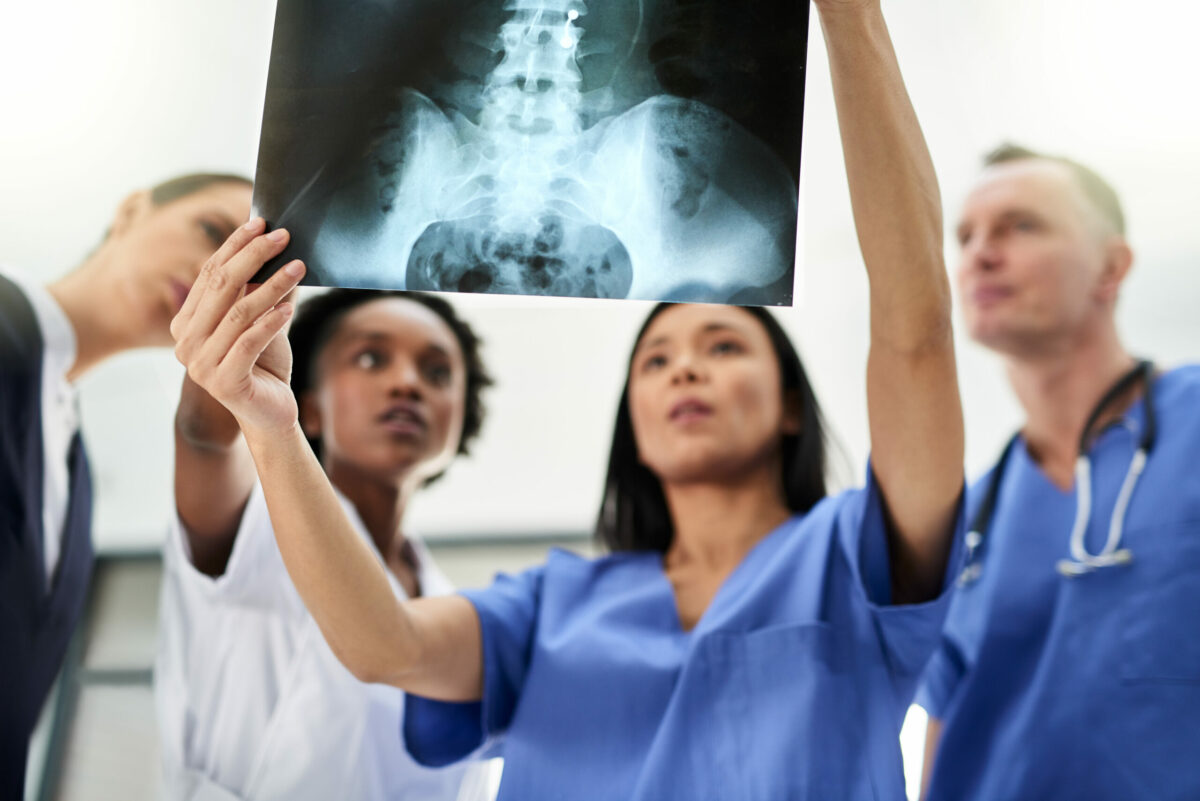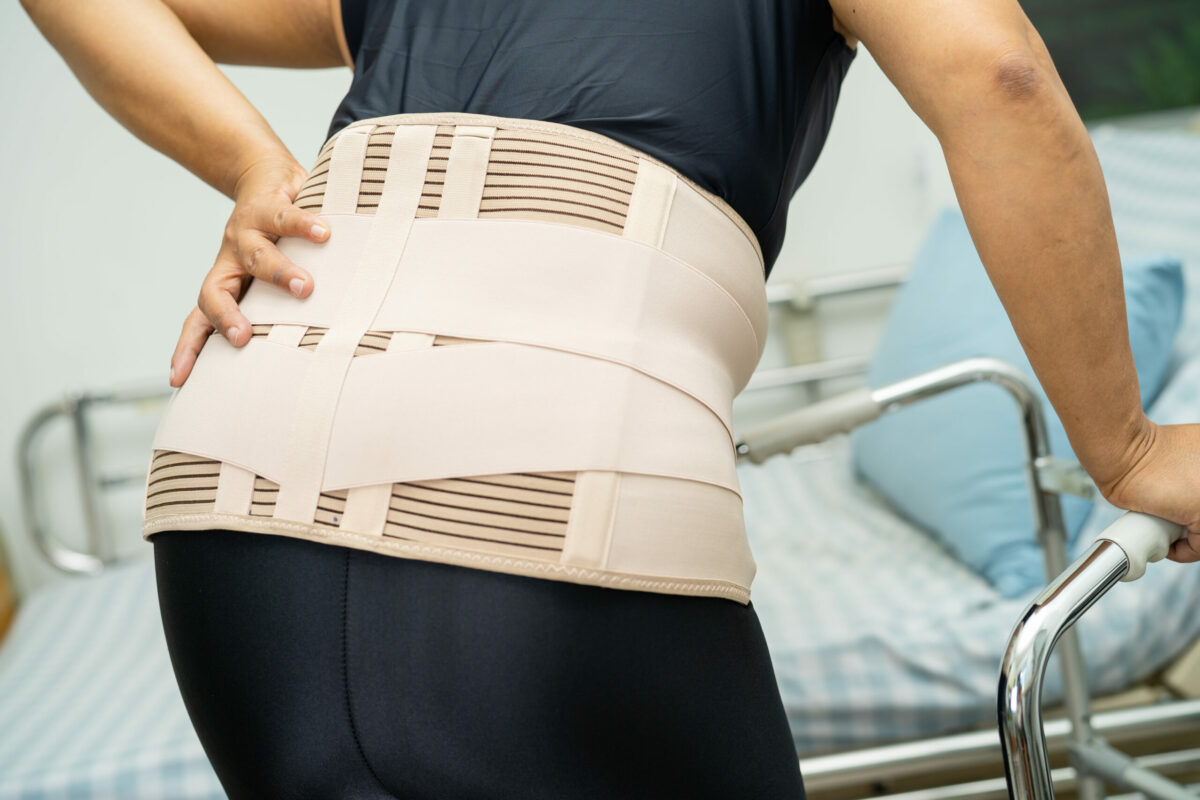A spine condition in which the backbone becomes curved is called scoliosis. The curve angle can be small, large, or in between. However, physicians consider any curves more than 10 degrees measured on X-ray as scoliosis. They also use “C” and “S” letters to describe the scoliosis form.
Approximately 2%-3% of people in the United States have this spine condition. It usually occurs between 10-15 years old. While both men and women can get this condition, a woman is more likely to need treatment than a man. Sometimes, healthcare professionals do not know the exact cause of scoliosis.
Commonly, if a person was diagnosed with scoliosis in their teen years it will continue in adulthood. Moreover, this condition tends to worsen over time, especially if you experience a severe form.
Symptoms
- Bigger shoulder blade
- Uneven shoulders
- Visible curve in the back
- Farther stick of the ribs in one part of the body
- One hip may look like it is higher than another
Check below some examples of what scoliosis can provoke:
- Back stiffness
- Muscle strain, which leads to fatigue (extreme tiredness)
- Breathing problems
- Numbness and pain in the legs
- Low back pain
Most teenagers with scoliosis usually do not notice any symptoms (including pain) but if you experience numbness and pain, you should visit a doctor for treatment. Moreover, people over 40 years old with untreated scoliosis may experience pain due to broken disks in their back.
Causes and Risk Factors
There are some scoliosis types that have clear causes. Therefore, physicians classified this back condition into 2 groups such as structural and nonstructural.
In those who experience nonstructural scoliosis, the spine works properly but looks curved. This back condition type usually occurs due to different factors including one leg being longer than another, muscle spasms, inflammations (such as appendicitis), and others. In most cases, when the underlying condition is treated, scoliosis goes away.
In structural scoliosis, the curve is rigid and usually cannot be reversed. The causes of this scoliosis type include:
- Birth defects
- Genetic disorders (including Down syndrome and Marfan syndrome)
- Infections
- Tumors
- Muscular dystrophy
- Cerebral palsy
In addition, about 30% of people with scoliosis have a family member with this spine disease. However, experts have not found any gene that provokes idiopathic scoliosis but they think there is a combination of genes that affects the probability and severity. Healthcare providers think that hormones (such as Estrogen) play a role in scoliosis development since females are more likely to develop this condition. In case you or your children have this spine condition, it is advised to have regular appointments with doctors.
Diagnosis
However, you may need to do several tests to confirm this condition. The tests include physical examination and imaging tests (such as X-ray, CT scan, and MRI).
X-ray
This test is usually done to determine the curve angle and if a person needs treatment or not. This test is often performed on the back and one body side. Physicians do not prescribe any treatments if the curve is small.
Imaging
In case you were diagnosed with this spine condition after an X-ray, physicians may order you to do a CT or MRI scan because it will help your doctor determine spine structure in detail. MRI can also show if you have any broken disks in the spine.
Degrees
Healthcare professionals measure the curve angle in the spine and if it is less than 10 degrees, you do not have this spine disease. However, if it is more, they diagnose scoliosis.
- Mild scoliosis – 10-24 degrees
- Moderate scoliosis – 25-39 degrees
- Severe scoliosis – 40 degrees and more
In case you are not treating this condition the curve in the spine can increase.
Treatment
People with mild scoliosis type commonly do not need any treatment but physicians can still perform X-rays to make sure the condition not worsens. Check below some treatment options:
Scoliosis Brace
This treatment option can prevent the curve from worsening in children who continue to grow. These braces are usually produced from plastic and cover the front and back of the body. It is advised to wear from 16 to 23 hours daily. They can be taken off during the shower. As per studies, children who wear braces prevent the worsening of the curve in 80% of cases.
Surgery
There are 3 primary surgery options that are commonly performed in severe scoliosis cases. For example:
- Spinal Fusion – This procedure involves pieces of bone or similar material that the surgeon puts between spine bones. They also will use special equipment that will help to hold the bones until they fuse or grow together and it will remain in your spine permanently.
- Expandable Rod – It is usually performed in severe scoliosis forms in children who continue to grow. The surgeon will use hardware with rods and attach them to your ribs or spine. The length of the rods is often adjusted every 3-6 months. Thereafter, when the growth stops, the doctors will remove the rods and will do a spinal fusion.
- Vertebral Body Tethering – This is a new treatment that helps children keep a straight spine during growth. However, the hardware your surgeon will use lessens the worsening of the condition also will remain in the body permanently.
Types of Scoliosis
- Idiopathic Scoliosis – It is the most common type of scoliosis and the exact cause is not known. It accounts for about 80% of all scoliosis cases.
- Congenital Scoliosis – This type starts when the baby’s spine develops before birth. The main cause of this scoliosis type is vertebrae (small bones in the back). In most cases, physicians notice it occurs when the child is born. However, not every time is possible to determine this condition in newborns.
- Neuromuscular Scoliosis – This scoliosis type is commonly provoked by other diseases (including Spina Bifida, cerebral palsy, spinal cord injury, and others). Previous conditions negatively affect back muscles and they cannot support the spine properly.
- Degenerative Scoliosis – It occurs in people over 65 years old in the lower back. The main causes are disks and joints that start to wear with aging. However, it is considered a mild form of scoliosis.
- Rotoscoliosis – This is considered the most severe and painful scoliosis form. Consult with your doctor for more details.
Complications
In case you leave this condition untreated, it may lead to some unpleasant complications. For example:
- Low back pain
- Trouble breathing due to pressure of the ribs on the lungs
- Low self-esteem caused by the appearance that this condition causes
You should visit a doctor right away if develop any of the previous complications.
Prevention
However, it is not possible to prevent this spine condition. Moreover, some people think that heavy backpacks can provoke neck and shoulder pain and lead to scoliosis but it is not true. One way how a person can get scoliosis is through sports that put a heavy strain on the back including football, gymnastics, horseback riding, and others.
Healthcare professionals usually advise doing exercise or physical therapy. In any case, more research is needed to understand how well exercises work on a curved spine, according to the American Academy of Orthopedic Surgeons.
Frequently Asked Questions
Can scoliosis worsen over time?
Yes, people who ignore this condition and do not receive treatment can experience a worsening of this spine condition over time.
What are the main causes of scoliosis?
Experts do not understand why this spine disease occurs in more than 80% of cases. In other cases, this condition occurs due to degeneration of the disks in the spine and other health conditions including arthritis, osteoporosis, hereditary disorders, and others.
What are primary scoliosis symptoms?
- Uneven waist and shoulders
- One hip or leg is higher than another
- Back pain
In case you have additional questions, ask your healthcare professional.




